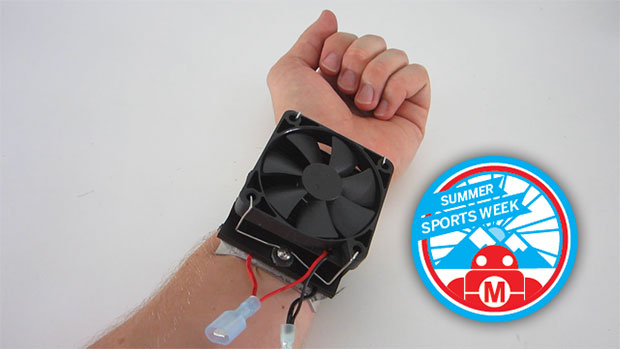Summer is hot, especially if you are being active outdoors. So to avoid getting overheated, I made a simple thermoelectric cooling unit that attaches to your wrist. This is able to rapidly cool your entire body.
You can use this to cool down after a workout or between plays. The unit is small and easily portable. All you need is access to electricity, such as a 12-volt battery.
[youtube:http://youtu.be/BeLa72oSf3c]See the project on Instructables: www.instructables.com/id/Wrist-Cooling-System/


